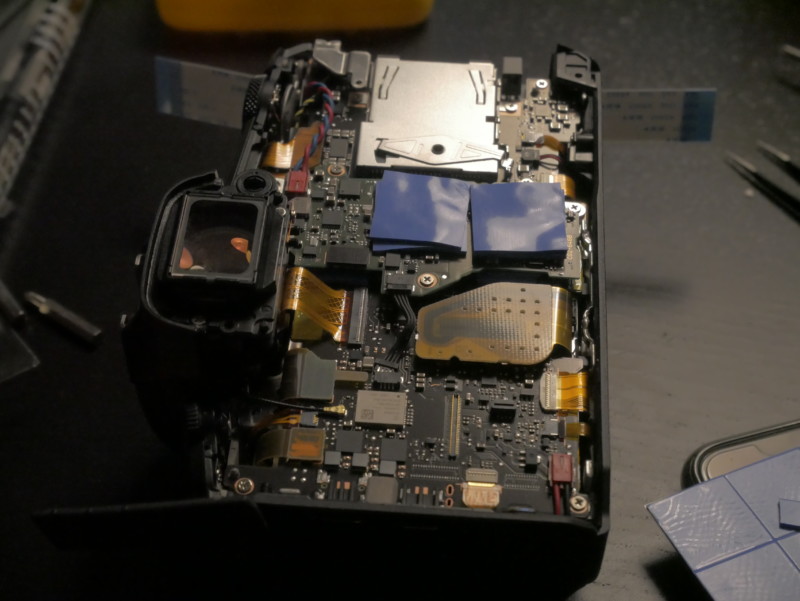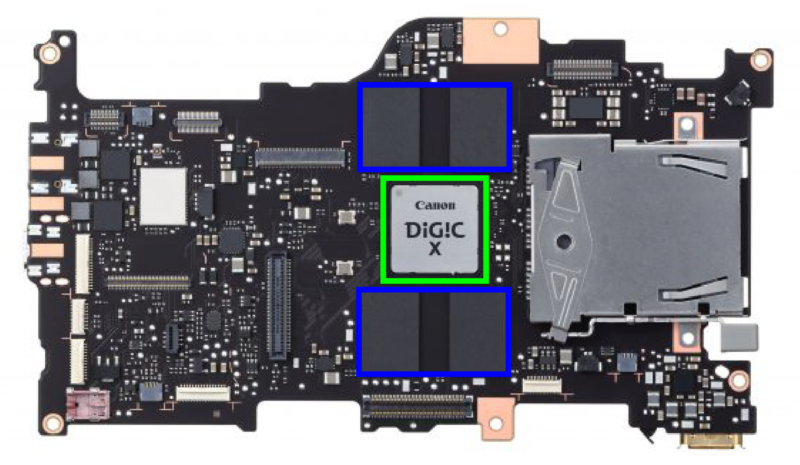
After making a fairly straightforward thermal modification to his new Canon EOS R5, maker/tinkerer Yifan Gu was able to get the camera to record unlimited 8K without having to resort to various timer resetting “hacks.” All he had to do was swap out the thermal pads and add a couple more.
This intriguing DIY project is detailed in a post on Yifan’s blog, and it’s pretty straightforward. Speaking with PetaPixel over email, Gu described the modification in simple terms:
I swapped out the thermal pads under the power sub-board (the green one) and added thermal pads between the power sub-board and the enclosure. So there’s another path for the heat from the CPU to the outside world (albeit somewhat indirect, CPU -> power sub-board -> enclosure).
In other words: he swapped out the two thermal pads that are already sitting over the DRAM chips on the underside of the sub-board (blue squares below), and then added thermal pads to the top of the sub-board as well (see photo at the top). From there, all he had to do was scrape the black spacer pad off the inside of the camera’s back cover so that the internals don’t get squished.
You can find a step-by-step guide with photos on Gu’s blog.

After the modification was completed, Gu put the camera to the test, and the results are very encouraging. At 15°C (59°F) ambient temperature, he was able to record unlimited 8K without any sort of “timer” cutting him off. At 25°C (77°F) the camera would still overheat and turn off, but thanks to the improved heat dissipation, even a “small fan pointed at [the camera]” allowed him to record 8K with no limits.
You can see the full demo of this second scenario—recording 8K, at 25°C, with a small fan pointed at the camera—below:
Finally, outdoors at 23°C (73°F), the thermally modified EOS R5 was able to record 48 minutes of 8K. Even more encouraging, after just 8 minutes of cool down he was able to record another 28 minutes of 8K, so the modification seems to have noticeably improved the recovery time, which was the main concern for most videographers anyway.
You can see a full, unedited recording of THAT test below:
While any modification where you have to open up your camera makes us a bit queasy, this does seem like a safer (relatively speaking) option than some of the battery door hacks and other tricks we’ve seen for bypassing the thermal limits that are built in to the camera. That’s because this modification doesn’t bypass the temperature sensors all together—it simply gives the heat inside the camera a new way to get out.
That said, the standard disclaimer applies: if you try this at home, you are undertaking this modification at their own risk. Opening up your R5 will void your warranty and any unauthorized modification could potentially brick your camera, so if you want to try this yourself, please proceed with caution and don’t go blaming us or Yifan if you break your brand new $3,900 camera.
To see a full step-by-step walkthrough of the thermal mod, complete with a list of required tools and materials, head over to Yifan’s blog.
Image credits: Photos by Yifan Gu and used with permission.